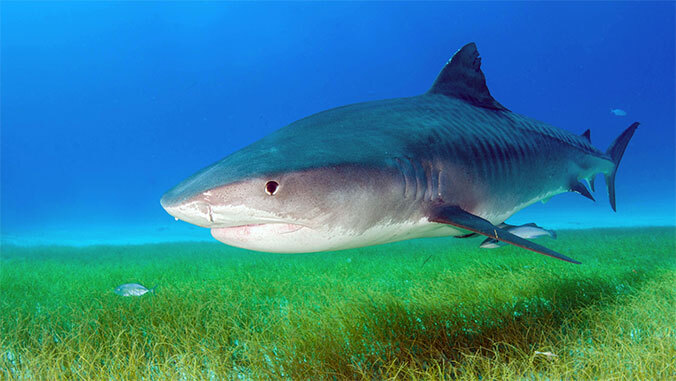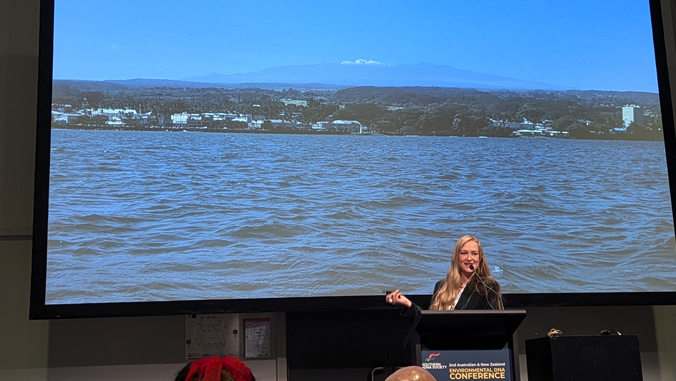Sharks Critical to Ocean Ecosystems, More Protection Needed

Shooting for the Moon: Research at Hawai’i Institute of Marine Biology Offers First Step Toward a Lunar Biorepository to Secure Earth’s Biodiversity
July 31, 2024
Humpbacks Wield and Manufacture Tools
August 20, 2024Sharks Critical to Ocean Ecosystems, More Protection Needed

Tiger Sharks (Galeocerdo cuvier) are known for having the most diverse diet of all sharks. (Photo credit: Marion Kraschi)
UH News, first published August 2, 2024
Shark conservation must go beyond simply protecting shark populations—it must prioritize protecting the ecological roles of sharks, according to new research at the University of Hawaiʻi.
The largest sharks of many of the biggest species, such as tiger sharks and great whites, play an oversized role in healthy oceans, but they are often the most affected by fishing. The big sharks help maintain balance through their eating habits. Sometimes their sheer size is enough to scare away prey that could over-consume seagrass and other plant life needed for healthy oceans.
Sharks also help shape and maintain balance from the bottom-up. That means a variety of sharks in a variety of sizes are needed, yet their many and diverse contributions are under threat from overfishing, climate change, habitat loss, energy mining, shipping activities and more. The study, led by Florida International University (FIU) with partners at UH Mānoa’s Hawaiʻi Institute of Marine Biology (HIMB) and others, was published in Science and sheds new light on how sharks- and their size- contribute to healthy oceans.
“New tools and technologies have enabled us to make huge strides in recent years in understanding the diverse—and critically important—roles that sharks play in the world’s ocean ecosystems,” explains Elizabeth Madin, co-author of the paper and associate professor at HIMB. “It’s clear now that protecting shark populations is a wise investment in ocean health, and one which ultimately benefits people and the planet.”
See the full story on UH News!




